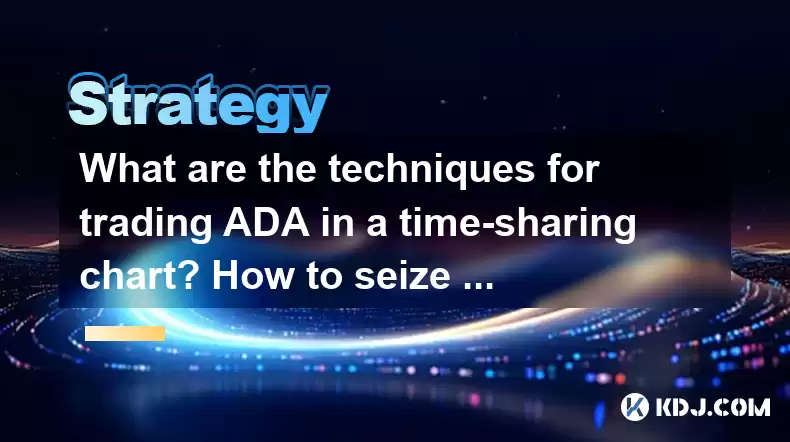-
 Bitcoin
Bitcoin $114400
1.32% -
 Ethereum
Ethereum $3499
2.20% -
 XRP
XRP $2.922
4.26% -
 Tether USDt
Tether USDt $0.0000
0.03% -
 BNB
BNB $752.6
1.53% -
 Solana
Solana $161.8
1.64% -
 USDC
USDC $0.9999
0.01% -
 TRON
TRON $0.3267
1.32% -
 Dogecoin
Dogecoin $0.1991
3.02% -
 Cardano
Cardano $0.7251
3.29% -
 Hyperliquid
Hyperliquid $38.32
3.36% -
 Stellar
Stellar $0.3972
7.58% -
 Sui
Sui $3.437
2.74% -
 Chainlink
Chainlink $16.29
3.65% -
 Bitcoin Cash
Bitcoin Cash $545.3
3.70% -
 Hedera
Hedera $0.2482
7.49% -
 Ethena USDe
Ethena USDe $1.001
0.03% -
 Avalanche
Avalanche $21.40
2.02% -
 Toncoin
Toncoin $3.579
1.56% -
 Litecoin
Litecoin $109.3
2.20% -
 UNUS SED LEO
UNUS SED LEO $8.951
-0.18% -
 Shiba Inu
Shiba Inu $0.00001220
2.75% -
 Polkadot
Polkadot $3.613
2.99% -
 Uniswap
Uniswap $9.173
3.78% -
 Monero
Monero $302.6
2.62% -
 Dai
Dai $0.0000
0.00% -
 Bitget Token
Bitget Token $4.320
1.52% -
 Pepe
Pepe $0.00001048
3.40% -
 Cronos
Cronos $0.1314
4.33% -
 Aave
Aave $259.4
3.54%
What are the techniques for trading ADA in a time-sharing chart? How to seize intraday fluctuations?
Trading ADA on time-sharing charts involves using techniques like identifying support/resistance, moving averages, RSI, Bollinger Bands, and scalping to capitalize on intraday fluctuations.
Apr 29, 2025 at 03:35 pm

Trading ADA (Cardano) on a time-sharing chart involves a variety of techniques that traders use to capitalize on intraday fluctuations. A time-sharing chart, also known as a tick chart, displays price movements over specific time intervals, making it a valuable tool for short-term trading. This article will explore different techniques for trading ADA using a time-sharing chart and provide insights on how to effectively seize intraday fluctuations.
Understanding Time-Sharing Charts
Time-sharing charts are essential for traders looking to engage in short-term trading. These charts plot price movements at fixed time intervals, which can range from one minute to several hours, depending on the trader's strategy. For ADA trading, common intervals include 1-minute, 5-minute, and 15-minute charts. The choice of interval depends on the trader's time horizon and trading style.
To set up a time-sharing chart for ADA, follow these steps:
- Choose a reliable trading platform that supports ADA and offers customizable time-sharing charts.
- Select the desired time interval for your chart, such as 5 minutes or 15 minutes.
- Add relevant technical indicators to your chart, such as moving averages, RSI, or Bollinger Bands, to aid in your analysis.
Identifying Key Support and Resistance Levels
One of the primary techniques for trading ADA on a time-sharing chart is identifying key support and resistance levels. Support levels are price points where the ADA price tends to find buying interest, while resistance levels are points where selling pressure increases. These levels can be identified by observing historical price data on the time-sharing chart.
To identify support and resistance levels:
- Review past price action on the time-sharing chart to spot areas where the price has reversed multiple times.
- Use technical indicators like moving averages to confirm these levels. For instance, a 20-period moving average can act as dynamic support or resistance.
- Draw horizontal lines on your chart at these levels to visually represent them and monitor how the price interacts with them.
Utilizing Moving Averages for Trend Identification
Moving averages are crucial for identifying trends on a time-sharing chart. A simple moving average (SMA) or an exponential moving average (EMA) can help traders determine the direction of the trend. For ADA trading, a common approach is to use a combination of short-term and long-term moving averages.
To use moving averages effectively:
- Add a short-term moving average (e.g., 9-period EMA) and a long-term moving average (e.g., 21-period EMA) to your time-sharing chart.
- Observe the crossover of these moving averages. When the short-term EMA crosses above the long-term EMA, it may signal an uptrend, and vice versa for a downtrend.
- Use these signals to enter or exit trades based on the identified trend direction.
Implementing the RSI for Overbought and Oversold Conditions
The Relative Strength Index (RSI) is a momentum oscillator that measures the speed and change of price movements. It is particularly useful for identifying overbought and oversold conditions on a time-sharing chart. For ADA trading, the RSI can help traders anticipate potential reversals.
To use the RSI effectively:
- Add the RSI indicator to your time-sharing chart, typically with a standard setting of 14 periods.
- Monitor the RSI values. An RSI above 70 indicates overbought conditions, suggesting a potential price decline, while an RSI below 30 indicates oversold conditions, suggesting a potential price increase.
- Combine RSI signals with price action. For example, if the RSI is overbought and the price approaches a resistance level, it may be a good time to consider selling.
Employing Bollinger Bands for Volatility Analysis
Bollinger Bands are another valuable tool for trading ADA on a time-sharing chart. These bands consist of a middle band (usually a 20-period moving average) and two outer bands that are standard deviations away from the middle band. Bollinger Bands help traders assess volatility and potential price breakouts.
To use Bollinger Bands effectively:
- Add Bollinger Bands to your time-sharing chart with the default settings (20-period SMA and 2 standard deviations).
- Monitor the price action relative to the bands. When the price touches or moves outside the upper band, it may indicate overbought conditions, and when it touches or moves outside the lower band, it may indicate oversold conditions.
- Look for price breakouts. A breakout above the upper band may signal a continuation of an uptrend, while a breakout below the lower band may signal a continuation of a downtrend.
Seizing Intraday Fluctuations with Scalping
Scalping is a trading strategy that involves making numerous small trades to profit from minor price changes. For ADA trading on a time-sharing chart, scalping can be an effective way to seize intraday fluctuations. This strategy requires quick decision-making and a keen eye for short-term price movements.
To implement a scalping strategy:
- Use a short time interval on your time-sharing chart, such as a 1-minute or 5-minute chart, to capture rapid price movements.
- Set tight stop-loss orders to minimize potential losses, as scalping involves taking small profits frequently.
- Monitor the bid-ask spread closely, as it can impact the profitability of your trades. Aim to enter and exit trades when the spread is narrow.
- Combine technical indicators like moving averages and RSI to identify entry and exit points. For example, enter a long position when the price crosses above a short-term moving average and the RSI is below 70.
FAQs
Q: Can I use time-sharing charts for long-term ADA trading?
A: While time-sharing charts are primarily used for short-term trading, they can also be useful for long-term traders. By adjusting the time interval to longer periods, such as hourly or daily charts, long-term traders can still benefit from the detailed price action provided by time-sharing charts.
Q: How do I choose the right time interval for my ADA trading strategy?
A: The choice of time interval depends on your trading style and time commitment. For scalping and day trading, shorter intervals like 1-minute or 5-minute charts are suitable. For swing trading, longer intervals like 15-minute or 1-hour charts may be more appropriate. Experiment with different intervals to find what works best for your strategy.
Q: Are there any risks associated with using time-sharing charts for ADA trading?
A: Yes, there are risks involved. Time-sharing charts can be volatile, and short-term price movements can be unpredictable. Additionally, over-reliance on technical indicators without considering broader market trends can lead to false signals. It's important to use risk management techniques, such as stop-loss orders, to mitigate these risks.
Q: Can I combine multiple techniques on a single time-sharing chart for ADA trading?
A: Absolutely. Combining multiple techniques, such as using moving averages, RSI, and Bollinger Bands together, can provide a more comprehensive view of the market. This approach can help confirm signals and increase the probability of successful trades. However, be cautious not to overcomplicate your analysis, as it can lead to analysis paralysis.
Disclaimer:info@kdj.com
The information provided is not trading advice. kdj.com does not assume any responsibility for any investments made based on the information provided in this article. Cryptocurrencies are highly volatile and it is highly recommended that you invest with caution after thorough research!
If you believe that the content used on this website infringes your copyright, please contact us immediately (info@kdj.com) and we will delete it promptly.
- Kaspa, HBAR, and Cold Wallet: A New York Minute on Crypto's Latest Moves
- 2025-08-04 09:11:54
- Ethereum Whale Watch: Selling Pressure and Price Volatility
- 2025-08-04 09:11:54
- XRP ETF Mania: Teucrium's Crypto Triumph and the Altcoin Frenzy
- 2025-08-04 09:30:13
- Crypto Wallet Scam: A $900K Loss & What You Need to Know
- 2025-08-04 09:35:13
- Dogecoin's Wild Ride: Elliott Wave, Stochastic RSI, and What's Next, Ya Know?
- 2025-08-04 09:40:12
- Shiba Inu (SHIB), Crypto Investments, and the Meme Coin Evolution: What's the Deal?
- 2025-08-04 09:45:17
Related knowledge

How to avoid common crypto investment mistakes?
Jul 13,2025 at 01:35am
Understanding the Risks of Crypto InvestmentInvesting in cryptocurrency can be highly rewarding, but it also comes with significant risks. One of the ...

What is a long-short crypto strategy?
Jul 15,2025 at 10:56am
Understanding the Basics of a Long-Short Crypto StrategyA long-short crypto strategy is an investment approach where traders simultaneously take long ...

What is a long-short crypto strategy?
Jul 11,2025 at 01:28pm
Understanding the Basics of Long-Short Crypto StrategyA long-short crypto strategy is an investment approach where traders take both long and short po...

How to use the RSI indicator for crypto?
Jul 12,2025 at 03:56pm
Understanding the RSI Indicator in Cryptocurrency TradingThe Relative Strength Index (RSI) is a momentum oscillator used to measure the speed and chan...

Is copy trading a good strategy for crypto beginners?
Jul 12,2025 at 08:28am
Understanding Copy Trading in the Cryptocurrency MarketCopy trading is a strategy where novice traders replicate the trades of experienced investors a...

How to build a crypto portfolio with $1000?
Jul 13,2025 at 08:14pm
Understanding the Basics of Cryptocurrency InvestmentBuilding a crypto portfolio with $1000 starts with understanding the fundamentals of cryptocurren...

How to avoid common crypto investment mistakes?
Jul 13,2025 at 01:35am
Understanding the Risks of Crypto InvestmentInvesting in cryptocurrency can be highly rewarding, but it also comes with significant risks. One of the ...

What is a long-short crypto strategy?
Jul 15,2025 at 10:56am
Understanding the Basics of a Long-Short Crypto StrategyA long-short crypto strategy is an investment approach where traders simultaneously take long ...

What is a long-short crypto strategy?
Jul 11,2025 at 01:28pm
Understanding the Basics of Long-Short Crypto StrategyA long-short crypto strategy is an investment approach where traders take both long and short po...

How to use the RSI indicator for crypto?
Jul 12,2025 at 03:56pm
Understanding the RSI Indicator in Cryptocurrency TradingThe Relative Strength Index (RSI) is a momentum oscillator used to measure the speed and chan...

Is copy trading a good strategy for crypto beginners?
Jul 12,2025 at 08:28am
Understanding Copy Trading in the Cryptocurrency MarketCopy trading is a strategy where novice traders replicate the trades of experienced investors a...

How to build a crypto portfolio with $1000?
Jul 13,2025 at 08:14pm
Understanding the Basics of Cryptocurrency InvestmentBuilding a crypto portfolio with $1000 starts with understanding the fundamentals of cryptocurren...
See all articles

























































































